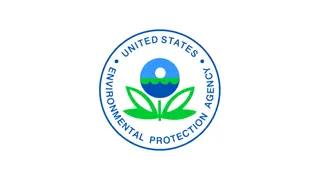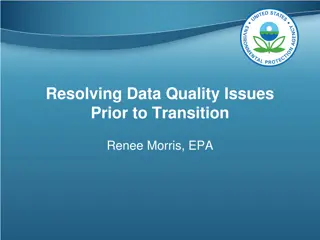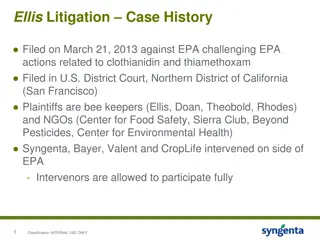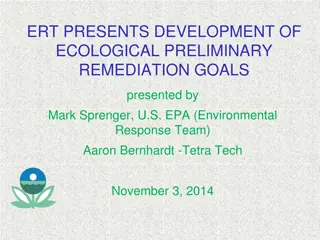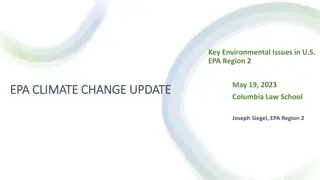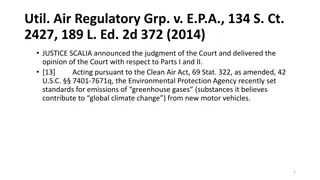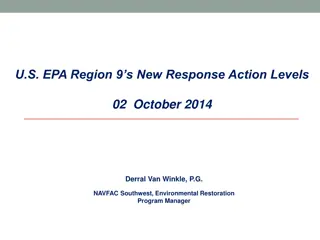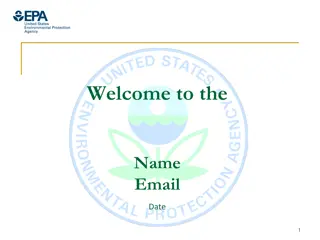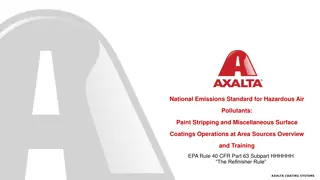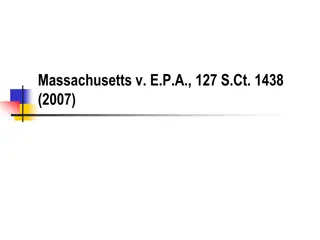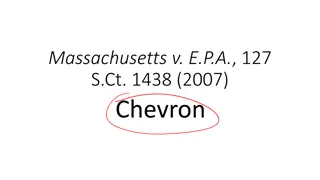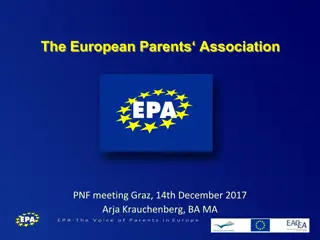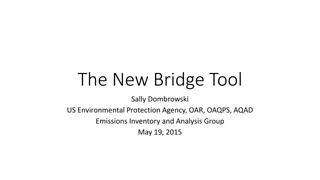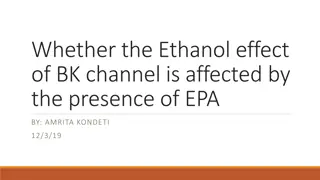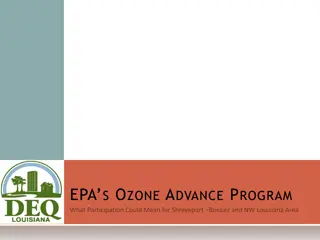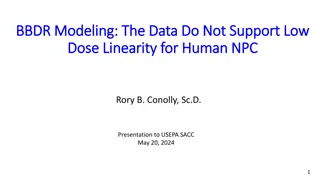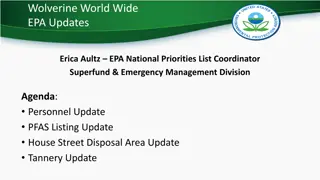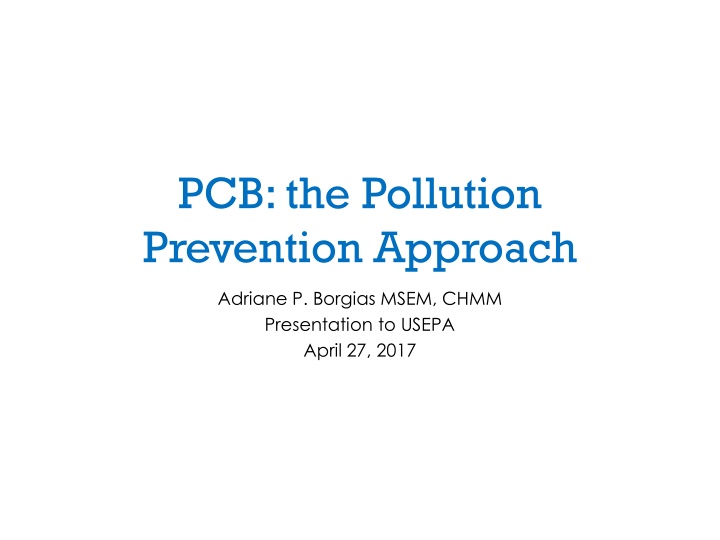
PCB Pollution Prevention Approach and River Stewardship
Learn about the PCB pollution prevention approach, the Spokane River pollution case study, achieving water quality standards, and the importance of addressing national water quality concerns. Explore strategies such as waste management hierarchy, managing discharges, and utilizing green chemistry.
Download Presentation

Please find below an Image/Link to download the presentation.
The content on the website is provided AS IS for your information and personal use only. It may not be sold, licensed, or shared on other websites without obtaining consent from the author. If you encounter any issues during the download, it is possible that the publisher has removed the file from their server.
You are allowed to download the files provided on this website for personal or commercial use, subject to the condition that they are used lawfully. All files are the property of their respective owners.
The content on the website is provided AS IS for your information and personal use only. It may not be sold, licensed, or shared on other websites without obtaining consent from the author.
E N D
Presentation Transcript
PCB: the Pollution Prevention Approach Adriane P. Borgias MSEM, CHMM Presentation to USEPA April 27, 2017
Commitment SRRTTF Established by Memorandum of Agreement 2012. Members of the community, stewards of the river.
Case Study: PCBs and the Spokane River The Problem: The Spokane River does not meet the Water Quality Standards for polychlorinated biphenyls and other toxics. > 98% reduction in PCB loading is needed. Permitted discharges have a disproportionate responsibility for cleanup. End of pipe clean up is expensive and may not be possible. Using Pollution Prevention principles is the only viable option.
Can We Achieve our WQS? Assume all PCB from pigments becomes available to the river. (trash, decomposition, burning, wastewater, stormwater, etc.) 225 cf/s average annual flow into Long Lake 7x1012 kg water/yr. PCB Concentrations in the river: From pigments alone: 2 x 10-7 ppm Current WQS target: 0.07 x 10-7 ppm
Why this is important PCB is a national water quality concern Pathogens Metals (not Hg) Nutrients Number of Clean Up Plans O2 Depletion Sediment Number of Impaired Waters 488 PCBs 5598 Mercury 0 5,000 10,000 15,000 EPA Watershed Assessment, Tracking and Environmental Database
The Moving Pieces Health information Share Information Eliminate new sources Treatment Consumer choice Remove Legacy spills Cross Media Actions Education Best Regulation Management Practices Toxics Reduction Plans Model movement Green Chemistry Identify Sources Permits Understand the Watershed Manage Discharges Research
Waste Management Hierarchy Prevent Waste Generation Minimize Waste Generation Reuse Waste Materials Recycle Wastes: Doesn t work for PCB! Utilize for Energy Recovery Disposal
In Other Words: Don t make it Don t use it Use less of it Manage it better Dispose of it properly Clean up and/or Treat at End of Pipe
In Other Words: Don t make it Don t use it Use less of it Manage it better Dispose of it properly Clean up and/or Treat at End of Pipe
In Other Words: Don t make it Don t use it Use less of it Manage it better Dispose of it properly Clean up and/or Treat at End of Pipe
In Other Words: Don t make it Don t use it Use less of it Manage it better Dispose of it properly Clean up and/or Treat at End of Pipe
In Other Words: Don t make it Don t use it Use less of it Manage it better Dispose of it properly Clean up and/or Treat at End of Pipe
In Other Words: Don t make it: Stop or reduce inadvertent production. Don t use it: Regulatory & market incentives. Use less of it: Public awareness. Manage it better: Enforcement of rules. Dispose of it properly. Clean up and/or Treat at End of Pipe.
But, Is This Really a Problem? Color Pigments Manufacturers Association (2010): 90 million lbs pigments imported/manufactured in US. Estimated 1000-2000 lbs PCB/year. Estimated amount released in Spokane metro area based on per capita consumption. 2000/lb x 0.5 million Spokane/ 316 million USA 1435 g/yr inadvertently produce PCB potentially enters the Spokane River watershed. Correlation with the 2005 loading assessment: Total PCBs at Long Lake: 3664 mg/day = 1337 g/year.
Why this is important PCB is a Spokane River health concern.
Source Reduction Strategies Six strategies to achieve source reduction: Toxic chemical substitution Production process modification Finished product reformulation Production modernization Improvements in operations and maintenance In-process recycling of production material
Green Chemistry Solutions Green Chemistry is doing chemistry the way nature does: the design, development and implementation of chemical products or processes that reduce or eliminate the generation of hazardous substances PCB free pigments are a green chemistry opportunity.
PCB in Paint Pigments 33 commercial pigments > 50 PCB congeners Several dioxin-like Pigments also used in Inks Textiles Paper Cosmetics Leather Plastics Food Hu and Hornbuckle, 2010: http://www.ncbi.nlm.nih.gov/pmc/articles/PMC2853905/figure/fig2/
Yellows, Oranges, Reds Baso et al. 2009 in Guo, Praipipat, and Rodenburg: http://www.p2.org/wp-content/uploads/june-27-pcbs-webinar.pdf
Blues and Greens Hu and Hornbuckle, 2010: http://www.ncbi.nlm.nih.gov/pmc/articles/PMC2853905/figure/fig3/
Whites Guo, Praipipat, and Rodenburg: http://www.p2.org/wp-content/uploads/june-27-pcbs-webinar.pdf



